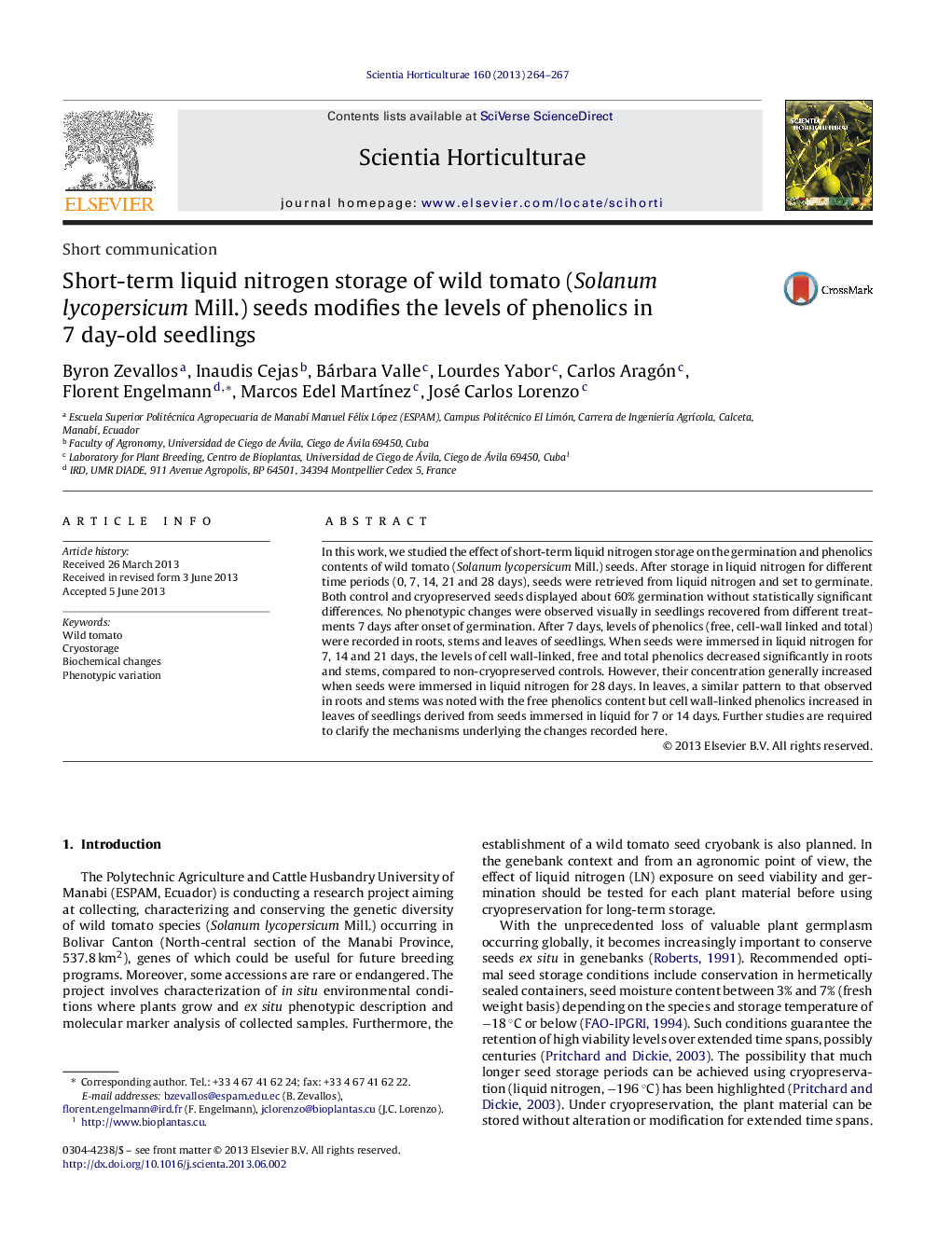| Article ID | Journal | Published Year | Pages | File Type |
|---|---|---|---|---|
| 4566979 | Scientia Horticulturae | 2013 | 4 Pages |
•Wild tomato seeds were stored in liquid nitrogen for 0–28 days.•No phenotypic changes were observed in recovered seedlings.•Phenolics contents were measured in roots, stems and leaves of recovered seedlings.•Phenolics contents varied depending on liquid nitrogen storage duration.
In this work, we studied the effect of short-term liquid nitrogen storage on the germination and phenolics contents of wild tomato (Solanum lycopersicum Mill.) seeds. After storage in liquid nitrogen for different time periods (0, 7, 14, 21 and 28 days), seeds were retrieved from liquid nitrogen and set to germinate. Both control and cryopreserved seeds displayed about 60% germination without statistically significant differences. No phenotypic changes were observed visually in seedlings recovered from different treatments 7 days after onset of germination. After 7 days, levels of phenolics (free, cell-wall linked and total) were recorded in roots, stems and leaves of seedlings. When seeds were immersed in liquid nitrogen for 7, 14 and 21 days, the levels of cell wall-linked, free and total phenolics decreased significantly in roots and stems, compared to non-cryopreserved controls. However, their concentration generally increased when seeds were immersed in liquid nitrogen for 28 days. In leaves, a similar pattern to that observed in roots and stems was noted with the free phenolics content but cell wall-linked phenolics increased in leaves of seedlings derived from seeds immersed in liquid for 7 or 14 days. Further studies are required to clarify the mechanisms underlying the changes recorded here.
